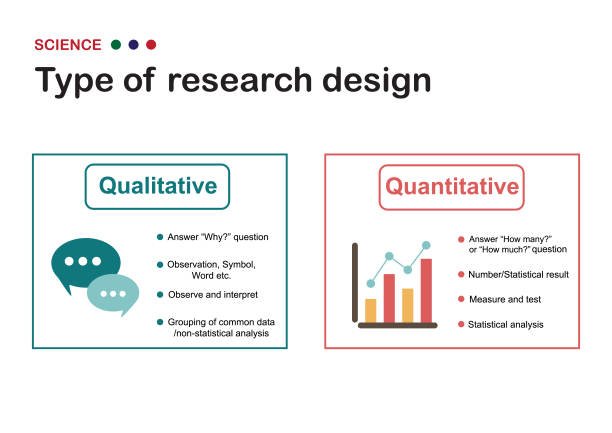The world of research is rich and diverse, with various methods employed to understand and explore different phenomena. Two primary methodologies that researchers often use are Quantitative Research and Qualitative Research. While both approaches are valuable in different contexts, they differ significantly in their focus, methods, and outcomes. This article will make a clear distinction between these two research methodologies and provide examples of each.
Distinction Between Quantitative and Qualitative Research Methodology and Provide Examples
The distinction between Quantitative and Qualitative Research Methodology lies in the approach and focus of the study. Quantitative research involves collecting and analysing numerical data to identify patterns and make generalisations. It is often used in scientific studies where objectivity and measurability are key. An example in a South African context might be a survey conducted to determine the average income level in Johannesburg. Qualitative research, on the other hand, seeks to understand human behaviour and the reasons behind it, often through non-numerical data like interviews or observations. It can provide deeper insights into emotions, opinions, and motives. A South African example could be an ethnographic study on the cultural practices of the Zulu community. In summary, while quantitative research is focused on ‘what’ and ‘how many,’ qualitative research explores the ‘why’ and ‘how.’
Quantitative Research
Definition and Focus
Quantitative Research is an empirical method that focuses on gathering numerical data and quantifying it through statistical, mathematical, or computational techniques. It aims to quantify relationships between variables, test hypotheses, and make predictions.
Methods and Characteristics
- Data Collection: It involves structured methods such as surveys, questionnaires, and experiments, where the data is collected in numerical form.
- Objective Approach: The approach is objective, aiming to provide precise, measurable, and generalizable results.
- Statistical Analysis: Researchers use statistical tools and mathematical models to analyze the data, identifying patterns and relationships.
Examples
- Public Health Survey: A nationwide survey that quantifies the prevalence of a particular disease in the population, using structured questionnaires and statistical analysis.
- Market Research: Businesses conducting market research to understand consumer preferences through numerical ratings, enabling them to identify trends and make informed decisions.
Qualitative Research
Definition and Focus
Qualitative Research, on the other hand, is exploratory and emphasizes understanding human behavior, emotions, experiences, and social phenomena. It seeks to interpret and make sense of the complex reality through words, images, and other non-numerical forms.
Methods and Characteristics
- Data Collection: This methodology often uses unstructured or semi-structured techniques such as interviews, focus groups, observations, and content analysis.
- Subjective Approach: Qualitative research adopts a subjective approach, allowing for flexibility and a deeper exploration of participants’ thoughts and feelings.
- Thematic Analysis: Researchers analyze the data by identifying themes and patterns, focusing on the meaning and context rather than quantification.
Examples
- Ethnographic Study: Anthropologists conducting an ethnographic study to understand the cultural practices of a community, through immersive observation and open-ended interviews.
- Psychological Therapy Research: Psychologists researching the experiences of patients undergoing a specific therapy, using in-depth interviews to gain insights into their emotions and perceptions.
Conclusion
Quantitative and Qualitative Research represent two different paradigms in research methodology, each with its unique focus, methods, and outcomes. Quantitative research is concerned with quantifying and measuring relationships, while qualitative research aims to understand and interpret the human experience in its complexity. Both approaches offer valuable insights and are often used complementarily in mixed-methods research to provide a more comprehensive understanding.
By understanding the distinctions between these two methodologies, researchers, students, and professionals can choose the appropriate approach for their specific research questions and goals.

